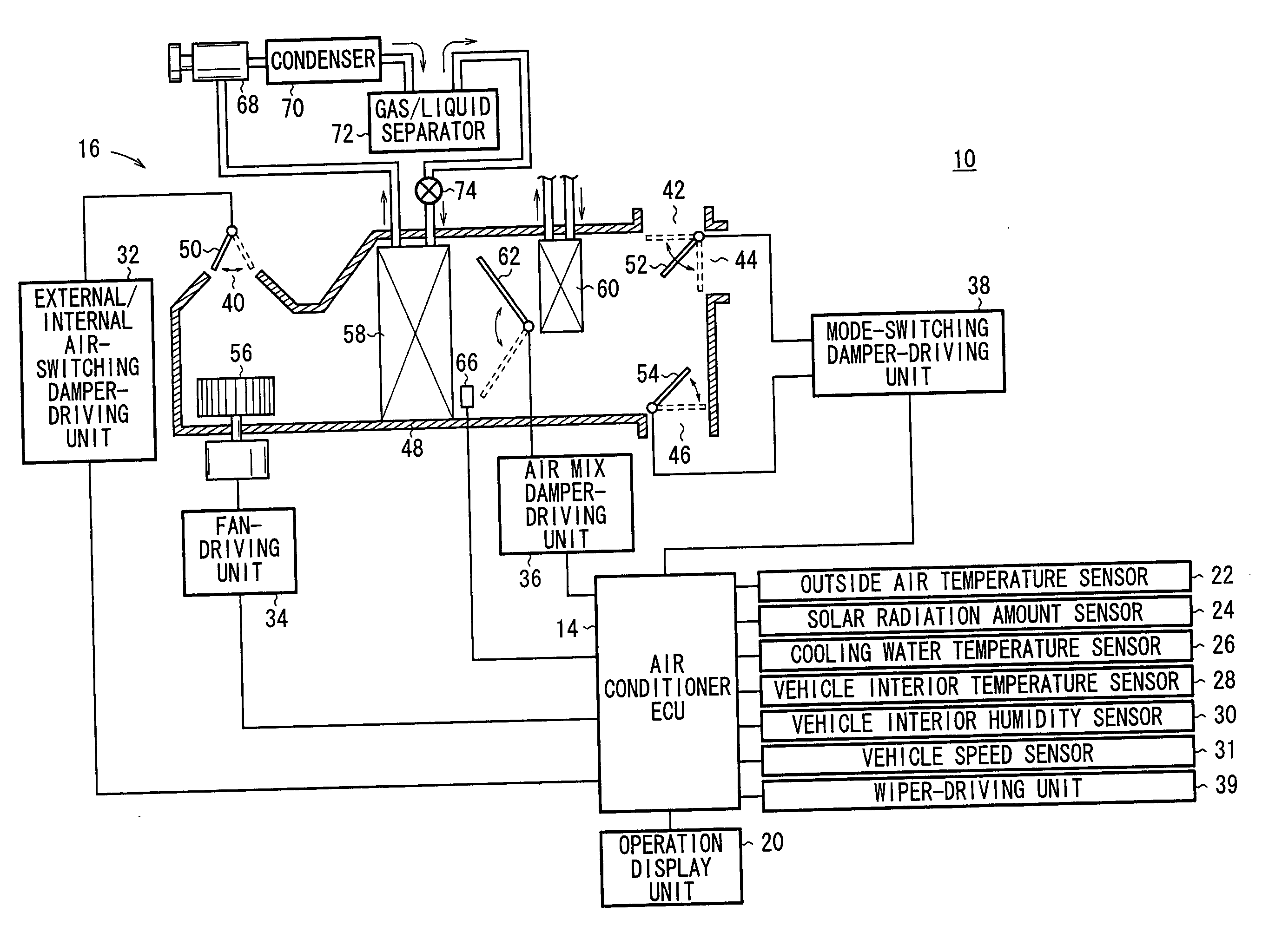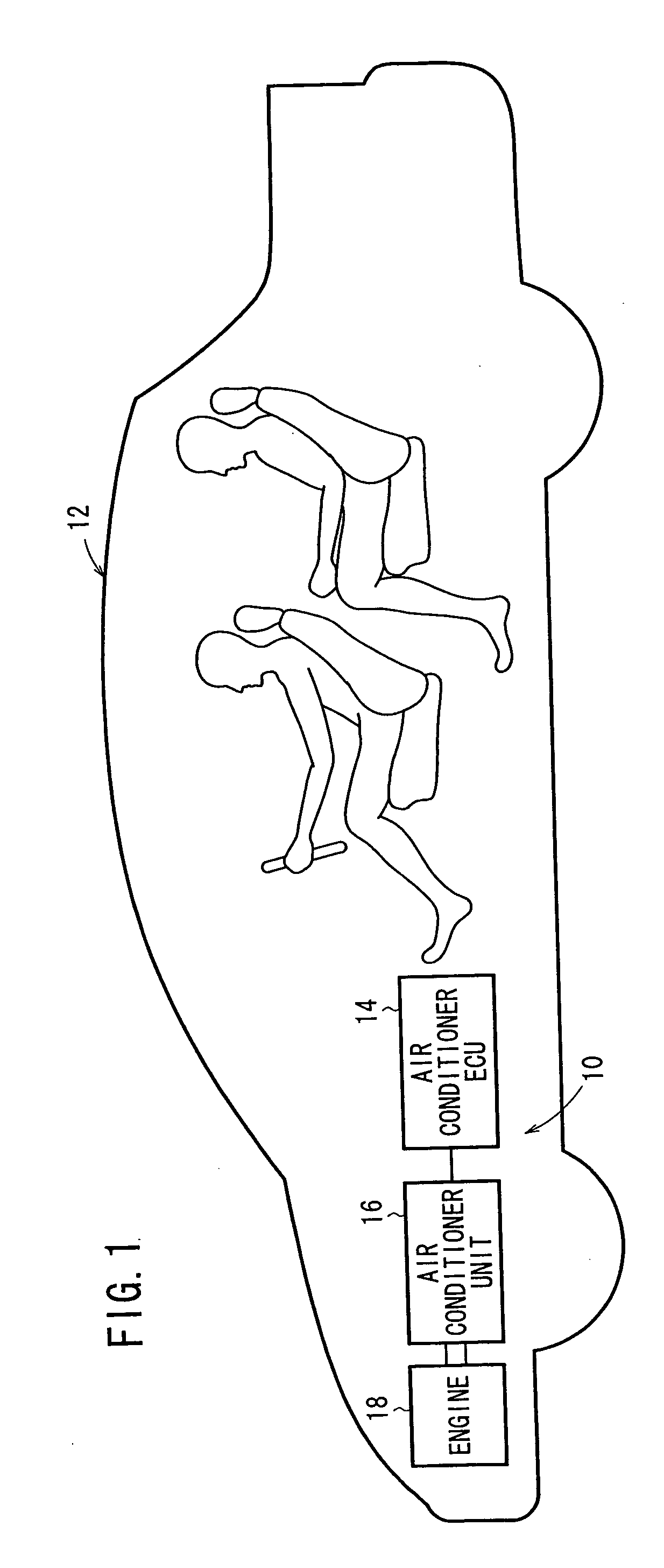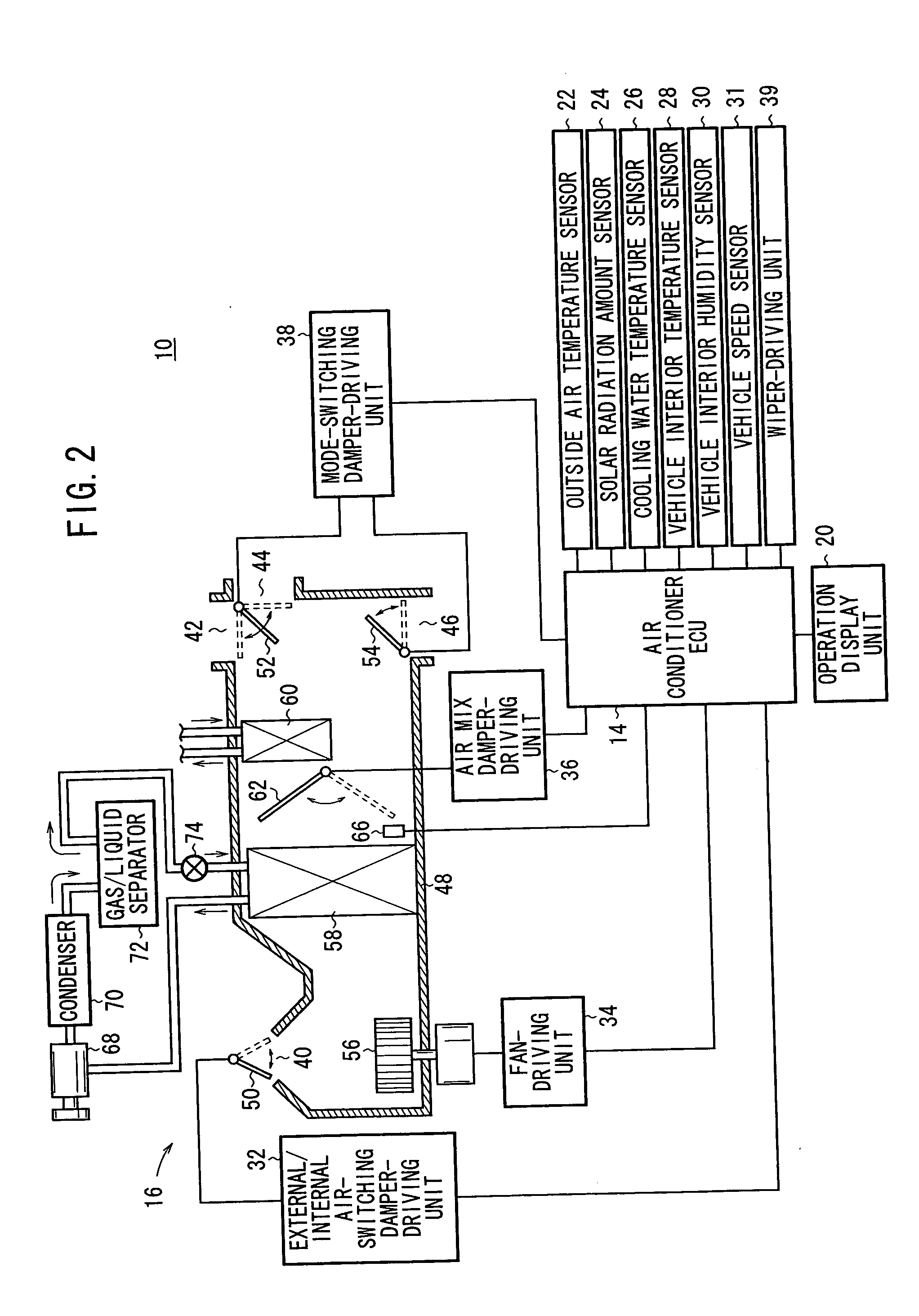Vehicle air conditioning apparatus
a technology for air conditioning apparatus and vehicles, which is applied in the direction of lighting and heating apparatus, heating types, instruments, etc., can solve the problems of high system cost, poor processing circuit, and water vapor in the passenger compartment of the vehicle being subjected to dew formation on the window glass
- Summary
- Abstract
- Description
- Claims
- Application Information
AI Technical Summary
Benefits of technology
Problems solved by technology
Method used
Image
Examples
Embodiment Construction
[0027]FIG. 1 shows a vehicle 12 which carries a vehicle air conditioning apparatus 10 according to an embodiment of the present invention. As shown in FIG. 2, the vehicle air conditioning apparatus 10 comprises an air conditioner ECU (Electronic Control Unit) 14, and an air conditioner unit 16 which adjusts the temperature, the humidity, and the amount of air based on the control of the air conditioner ECU 14. Cooling water is supplied from an engine 18 to the air conditioner unit 16.
[0028] The air conditioner ECU 14 is connected to an operation display unit 20 on which a passenger in the vehicle 12 operates such as setting temperature or the amount of the air, and switching modes. The operation display unit 20 also displays the set temperature, the set air amount, and the set mode and so on.
[0029] Further, the air conditioner ECU 14 is connected to an outside air temperature sensor 22 which detects the outside air temperature of the vehicle 12, a solar radiation amount sensor 24 ...
PUM
 Login to View More
Login to View More Abstract
Description
Claims
Application Information
 Login to View More
Login to View More - R&D
- Intellectual Property
- Life Sciences
- Materials
- Tech Scout
- Unparalleled Data Quality
- Higher Quality Content
- 60% Fewer Hallucinations
Browse by: Latest US Patents, China's latest patents, Technical Efficacy Thesaurus, Application Domain, Technology Topic, Popular Technical Reports.
© 2025 PatSnap. All rights reserved.Legal|Privacy policy|Modern Slavery Act Transparency Statement|Sitemap|About US| Contact US: help@patsnap.com



